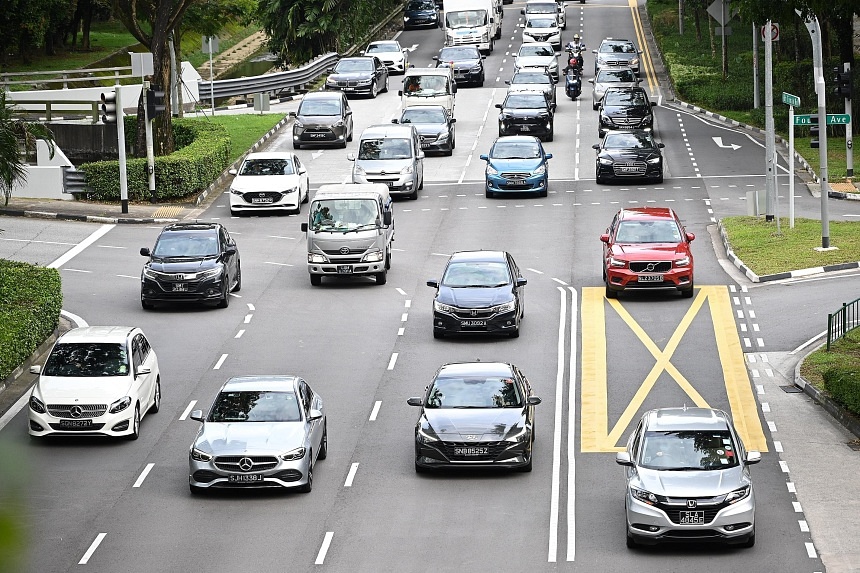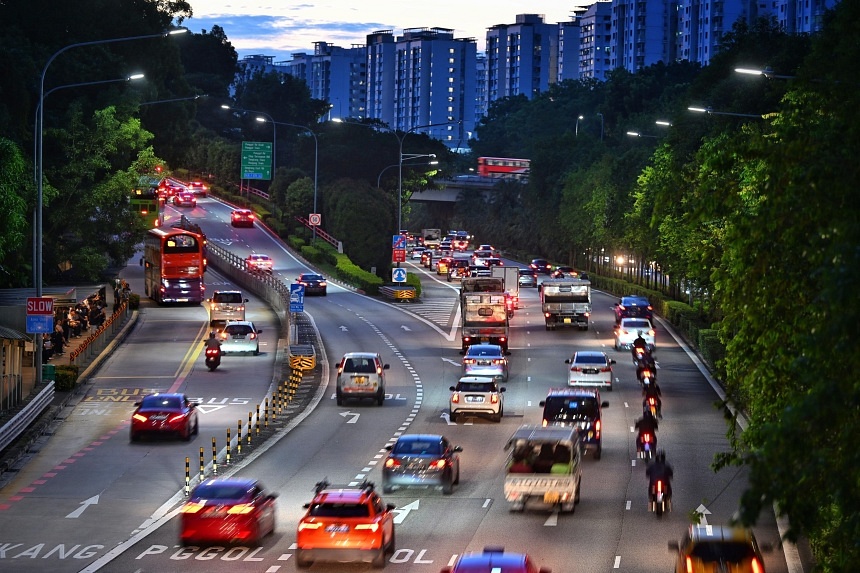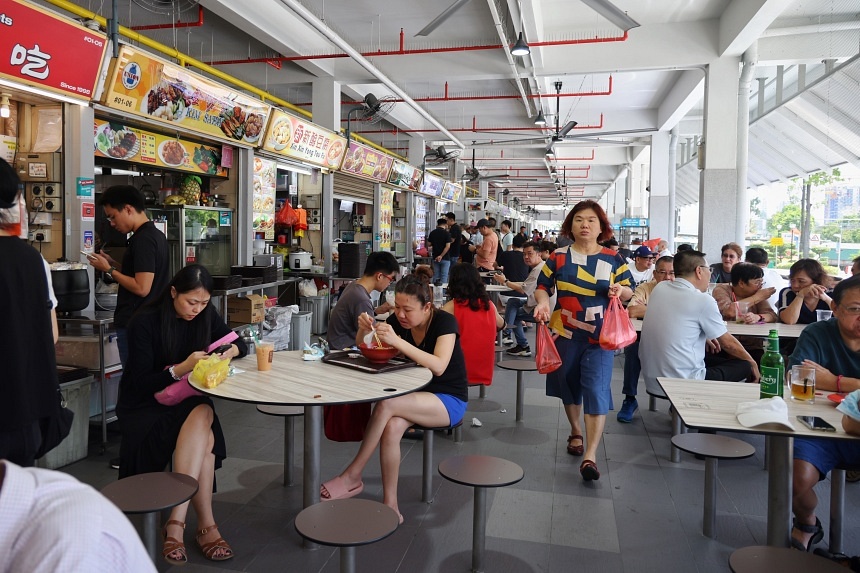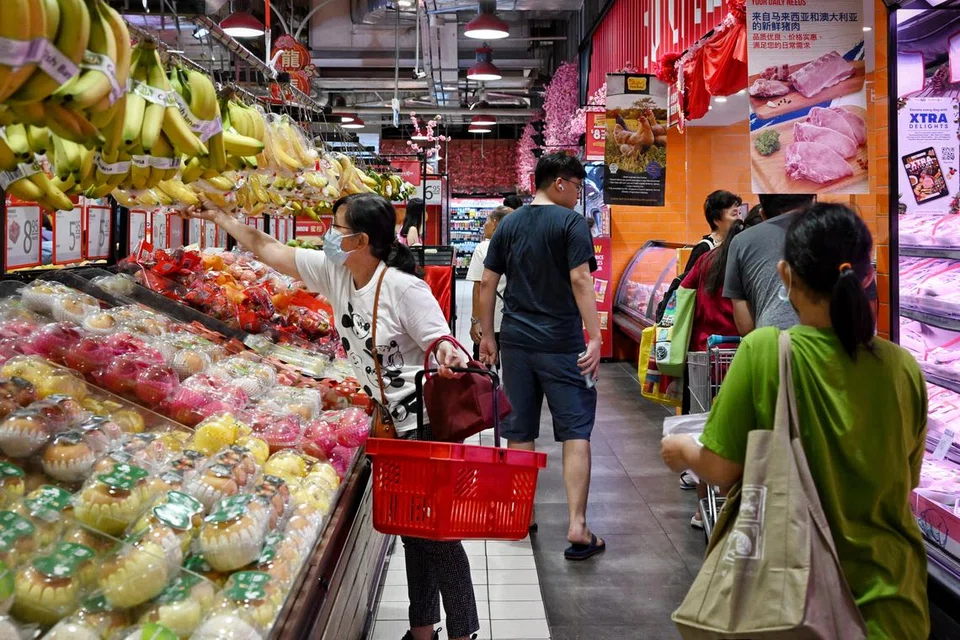Proposals to modify hawker stall rental system may lead to higher rents: Koh Poh Koon
According to an NEA survey in 2023, the cost of food ingredients accounted for nearly 60 per cent of operating costs. PHOTO: ST FILE
Goh Yan Han
Political Correspondent
Nov 14, 2024
SINGAPORE - Ideas from opposition MPs to adjust the hawker stall rent system may in fact lead to higher rentals, warned Senior Minister of State for Sustainability and the Environment Koh Poh Koon.
“We must make sure that the cure that we are all proposing is not going to be worse off than the issue we’re trying to resolve, to the detriment of hawkers and consumers,” he added.
He was speaking during a debate in Parliament on Nov 13 on a motion proposed by Progress Singapore Party Non-Constituency MPs Leong Mun Wai and Hazel Poa.
Their motion had called on the Government to review its policies relating to hawkers and the management of hawker centres to provide better support for hawkers to sustain and grow Singapore’s hawker culture so that Singaporeans can continue to enjoy good and affordable hawker food.
They had proposed several methods to reduce rent, meant to alleviate cost pressures for hawkers. These included moving away from the current tender system for stall allocation, and a different way to determine rents.
Addressing their proposals during a 5½-hour-long debate, Dr Koh first highlighted that rental costs are not the main component of overall costs borne by hawkers.
According to a National Environment Agency survey, the cost of food ingredients accounted for nearly 60 per cent of operating costs on average in 2023, he said.
Manpower costs take up about 20 per cent, while rental costs make up less than 10 per cent of operating costs, he added.
Dr Koh noted that stall rentals at hawker centres are generally lower than at nearby eating establishments such as coffee shops, foodcourts and small eateries.
For a majority of cooked food stallholders in hawker centres, median rent is about $1,250 a month, and has remained relatively stable for the past decade. This is even as overall prices have continued to rise.
Stressing that the Government, which builds the hawker centres, does not use rent for cost recovery, Dr Koh said that rental amounts are determined by what the tenderers bid. This can be as low as $1.
There is no reserve rent or minimum bid price, which means bidders can obtain stalls at low rental rates.
More than 300 stalls were obtained at bids below $100 over the last three years, while a few in 2023 and 2024 even won bids at $1, he added.
The Government regularly reviews and improves its measures to moderate hawker stall rents, Dr Koh said. For example, allowing stalls to be sublet in the past had led to higher rents, so the authorities moved in 2012 to disallow such subletting.
Another example is the change in policy to stagger the downward adjustment of the tendered rental rate over a longer period, over two tenancy renewals instead of one currently. This is to discourage prospective hawkers from putting in excessively high bids to win the tender, and then banking on rental being adjusted downwards to the assessed market rent later, said Dr Koh.
He added that occupancy rates for cooked food stalls have remained high, averaging above 95 per cent.
In 2023, the median successful tender price for such stalls was about $1,800, with about one in five stalls awarded at tender prices at or below $500.
More than four in 10 bidders were able to secure their bids below the assessed market rent, said Dr Koh. “So our system has actually kept rental prices reasonably affordable.”
“Overall, the tender system is working. We have made recent changes, and we expect to see some positive impact. We will continue to review, taking in suggestions and feedback from members and from hawkers themselves to continue improving the system.”
The authorities will be making available more information and online business cost estimation tools, as announced earlier in November.
This is to assist and encourage tenderers to make a more informed decision and to bid realistically, said Dr Koh. More details will come in early 2025.
He also addressed a $10,158 stall tender bid in July at Marine Parade Central Market and Food Centre that had made headlines and was cited by several MPs, including Mr Leong, in the debate.
This is an outlier bid – the only one over $10,000 in the last five years, said Dr Koh. Of the 7,000 cooked food stalls, only 4 per cent of rentals today are above the assessed market rent of $1,250.
“We have to be quite careful not to abandon a system that has actually worked quite well and benefited many hawkers just because of a small number of outliers,” he said.
Circling back to the proposals made, he acknowledged that there is no perfect system, but the Government will keep trying.
Mr Leong had proposed that instead of using the tender system, all hawker stalls be charged a monthly base rent of $500 or 3 per cent of gross turnover, whichever is higher.
In response, Dr Koh said that going by gross turnover would require a point-of-sale system for every stall in order to track what the takings really are.
On the fixed-rent model, he asked what price would be used to predetermine rent.
If the assessed market rent is used, all prospective hawkers would have to pay this price. This would mean that the 44 per cent of current hawkers who are currently bidding under the assessed market rent would have to pay more, said Dr Koh.
Ms Poa proposed that the allocation of hawker stalls be changed from the current system, which allocates to the highest rent tenders.
One way to do it could be by random ballot, while another could be to allow customers to decide, she said. For hawker centres located near Housing Board flats, residents living nearby could vote for their desired stalls, she added.
Dr Koh said that while balloting could provide an equal chance to all to obtain a stall at an upfront fixed rate, it could also encourage frivolous applications and excess demand for stalls at popular locations. This may not be fair to prospective tenderers with a genuine intent to set up a new stall, and this would also not benefit patrons, he added.
Workers’ Party MP Louis Chua (Sengkang GRC) had proposed a rental cap.
Dr Koh said a cap threshold gives bidders the assurance that bids will not go beyond a maximum ceiling, but could also encourage bidders to bid more competitively towards that ceiling in order to price out their competition. That could mean the end of the $1 rental bid stalls that currently exist, and could lead to overall bid prices trending higher, he added.
“As Mr Leong has also noted, rent is not really the major cost factor,” he said. “What hawkers need is customer footfall and fair pricing, so that they can have a decent margin and an income on the goods that they sell, because even if the rent is free, no footfall equals to no income.”












